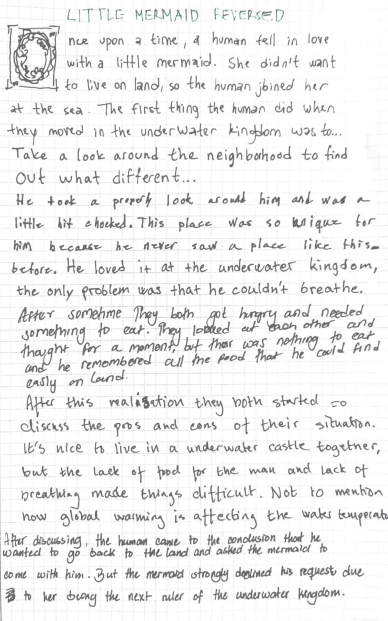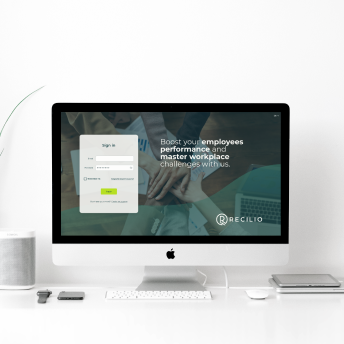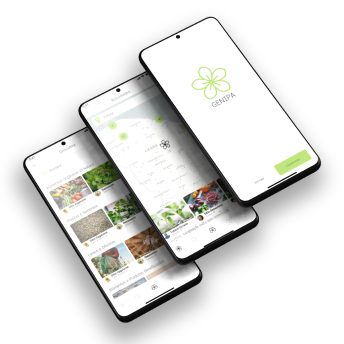The Ocean Starts Here
Storytelling toolkit for spreading Ocean Literacy

Overview
The Ocean Starts Here is a generative toolkit for storytelling in which we presented Malmö’s canals as a direct link to the ocean to spark conversations and generate reflections on local and global ocean issues. By creating a story departing from given beginnings and endings, or by collecting pieces of a story through answering ocean literacy questions, users get emotionally connected with the characters and the environmental issues, creating a deeper connection with the ocean.
Gelson Veloso, Miri Pyttel, Maria Nikoli, Juliana Hernandéz-Baéz, Margarida Xavier (UX researchers, UX/UI designers)
Timeline: 10 Weeks (August – October 2021)

Illustrations contributed for engagement and creating a connection with characters. Miri Pyttel.
Context
The project developed in collaboration with the Marine Education Centre in Malmö (Naturum Öresund) aimed at promoting ocean literacy to engage citizens in developing a more sustainable co-living with marine life. The project directly relates to the goal 14 of the SDG’s Agenda 2030, that aims at promoting the sustainable use of the oceans, seas, and marine resources for sustainable development. The toolkit was positively received by users and the achieved results led to a further collaboration on another external project at the Ocean Literacy Action Conference held on 9th and 10th May 2022 in Malmö.
How can we foster ocean empathy through ocean literacy?

Deliverable
Our proposed deliverable was a generative toolkit for storytelling that would:
- Present Malmö’s canals as part of the ocean as a strategy to expand citizens’ connection with it in their daily lives. The user research found out that most people usually do not relate or perceived the importance of the ocean beyond summer and holidays periods.
- Spark conversations and generate thinking on local and global marine issues.
Users can freely choose between two collaborative sets:
STORYTELLERS:
Creating a story based on given beginning and ending;
STORYRAIDERS
Unlocking and piecing together a story by correctly answering in a ocean literacy questions.

Storytellers
The information is made sense to users by prompting them to make it personal and understandable in their own words, while
stimulating them to discuss and collaborate with each other.


Set up the
timeline

Choose up
to 6 factcards

Get the beginning
and epilogue cards

Create your story,
bringing in the
chosen facts

Storyraiders
The information is accessed through a playful activity by collaboratively trying to unlock the full story. Participants discuss and test their knowledge on ocean literacy and get random clues or pieces of the story when correctly answer the questions. As final activity they connect the pieces and reflect on the characters’ journey, and ultimately on the marine socio-environmental local and global issues relate to it.


Get the map, a stack of answer cards and the beginning card

Draw a question card, dicuss and choose an answer

True or false. Either get a location and event card or only pick one

Puzzle the story together and unlock the reveal

Why the canals?
During the interviews with the specialists at Marine Education Center, we realized that the canals are part of the ocean, and became aware of environmental issues that affect them, thus triggering our interest in raising awareness of the canals’ issues.
Additionally, the user research and literature review indicate that people are:
FORGETFULL
We tend to forget how the canal affects us and how we affect it.
Edwards et al (2021). Design for Noticing with Biodiversity Logbooks.
BLINDL
We do not notice that the ocean starts at the canal, even though we see it on a daily basis.
Bellacasa (2019). Re-Animating Soils: Transforming Human-Soil Affections
DISTANT
We are emotionally disconnected from the canal because we can hardly relate to the non-human.
Chisin & Morrison. (2017). Design Fiction, Culture, and Climate Change.
Why storytelling?
GRIEF & HOPE TRANSITION WORKSHOP
Hands-on experience of how a creative activity can help you reflect on an issue on a deeper level.
EDWARD et AL, 2021
“A multidisciplinary approach incorporating creative dimensions is often favoured because it can re-inforce learning and grow empathy for plants [or the ocean]”.
McDRURY & ALTERIO (2002)
“Storytelling can: encourage co-operative activity, value emotional realities, capture complexities of situtations, make sense of experience, link theory to practice.”

First sketches for collaborative storytelling activities
REVERSE LITTLE MERMAID
Each participant writes their part of the story, building on what others wrote.
asynchronous, linear, whole picture
WORLD-BUILDING MURAL
Each participant draws a part of a post-apocalyptic ocean world mural.
asynchronous, non-linear, whole picture
GARTIC PHONE
A participant writes a sentence, the next has to draw it, the next has to write what they think the drawing is, and so on.
synchronous, linear, last round
MESSAGE IN A BOTTLE
Each participant writes their part of the story, building on what the last person wrote.
asynchronous, linear, last round

Design Experiments
COLLECTIVE PROBE
The participants received the same story prompt, and each wrote their own version of Chapter 1. Then, they had to keep writing chapters, building on other people's work. Multiple stories branched out in the end.
asynchronous, online, individual contribution
WORKSHOP
The participants were split in two groups, both with the same story prompt. While one had to write the story collaboratively, the other had the task to unlock the story's chapters. Both groups received ocean-literacy related facts.
synchronous, face-to-face, collective effort

Potentials and Risks
POTENTIALS
- Spread ocean literacy in a fun, memorable way
- Strengthen relations of human and nature
- Help Marine Education Centre attracting more visitors/ getting more follow-up
- Generate thinking about marine sustainability issues
- Spark conversation about marine sustainability issues
- Contribute to the fields of ixd and design for eco-social innovation – using collaborative storytelling to generate change and eco-social innovation (future designers and researchers could build on our findings)
RISKS
- Keeping up the momentum can be lost without a scaling out effect spatially and temporally
- Topic deviations through political conversations like immigrants seen as invasive species
- Eco-anxiety
Future Works
OUTREACH EXPANSION
- Start at the Marine Center and the activities they have now;
- Scalling out with existing partners of the Marine Center;
- Develop collective projects across the marine network .



